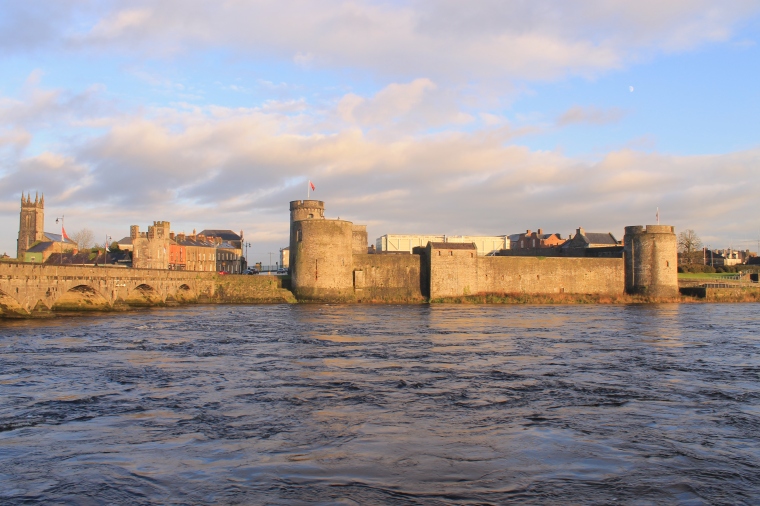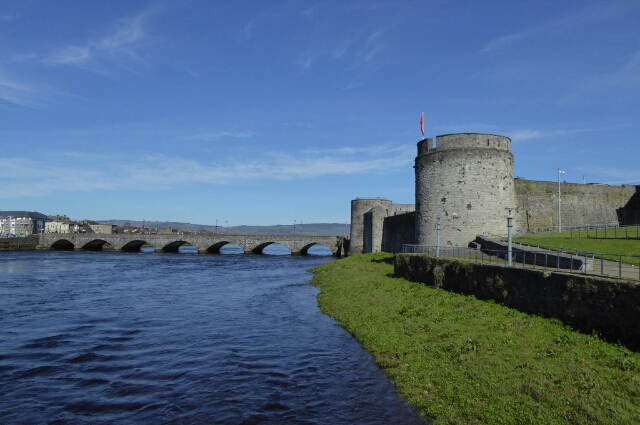We often hear that Limerick city does not make enough effort to interact with the river Shannon but we rarely hear how Limerick people could interact with the river. The city council have been improving access to the river. In addition to the boardwalks in the city, they have improved the walkways out to the University of Limerick and through Westfields Park. The main drainage has improved the water quality to the point where it is safe to swim in the river again. The next step in this itinerary should be ambitious. The next step should further facilitate the interaction between the city and the river. It should be to build an interpretative centre for the Shannon river in Limerick city.
Limerick is where the river begins to meet the ocean and Limerick developed where it is because it is the first safe fording point on the river that seafarers would have encountered. The story of Limerick is only one part of the story of the Shannon but it is the ideal place to recount the entire story of the Shannon.
 People in Limerick often marvel at the majesty of the river as it flows through the city but do we really know enough about the river, its role in our history, its role in our environments? This is a facility that would benefit the entire island, but particularly would benefit Limerick.
People in Limerick often marvel at the majesty of the river as it flows through the city but do we really know enough about the river, its role in our history, its role in our environments? This is a facility that would benefit the entire island, but particularly would benefit Limerick.
The river Shannon is part of the great circulation system of Ireland. It is the largest river in Ireland and Britain. It flows through or by 11 counties,* and countless smaller rivers and lakes feed into it. It is the backbone of the ancient paths through Ireland, and it is dotted with pilgrimage sites from the Estuary river up to Cuilcagh Mountain in Cavan, from Scattery Island to the mythical Connla’s well, passing Clonmacnoise by Snámh Dá Éan. The Shannon has supported both settlement and invasion. The history of Ireland, in part, formed around the river.


It is time that an interpretative centre for the Shannon river was built in Limerick city. Why interpret the Shannon river? What would it even mean to interpret a river? The Hicira handbook, relating to interpretation centres sets out the following definition.
“Interpretation is a tool which serves to bring the visitor into closer contact with heritage. It employs a code which is understandable to visitors to enable them to connect with their heritage and the setting and to experience and understand what they are seeing. Interpretation involves much more than mere transmission of knowledge and facts, one of the main objectives being to provoke perceptions leading to new sensations.”
Applying this to the Shannon river, we should seek to provide an interpretive centre for the river. We should be able to study the ecology and the geography of the river, we should be able to interact with the history and the mythology of the river. We should be able to see how the river affects our agriculture and our climate. This facility would not just be for tourists, but rather should be an educational facility that schools students from all over Ireland can come to and learn about Irish history in an interactive and engaging manner.

This facility should be built with access to the river, where visitors to the centre could interact with the river. Ideally, if such a site could be located, it should be built in proximity to where Limerick city was first built, on King’s Island. This would have the advantage of regenerating an area in need of investment, it would provide further facilities for visitors to the island. To place it in context, Athlunkard street derives its name from the phrase Áth Longphuirt, meaning “ford of the longphort,” referring to a 9th-century Viking longphort (defended ship encampment) once located at that ford over the Shannon. It would be a fitting point from which to examine the relationship between Limerick city and the river.The facility should seek to preserve the history of the Abbey fishermen, their culture and boats, and how the community in Limerick interacted with communities along the river.
In addition to the efforts made by the city council, it has been brilliant to see the success of both Nevsail Water Sports and Get West tours on the river. These experiences allow people see the river from a different perspective and show that the river can be a tourist attraction to interact with as opposed to just admire.
The facility should take its lead from the excellent programme that Nevsail Kayak Tours have been developing with the Hunt museum. Nevsail have developed an activity along with the Hunt museum whereby students get to visit the Hunt museum for a set period of time before also getting to kayak on the river. This method of teaching should be employed by any centre so that students can get an appreciation for the river itself while having fun. This all works towards increasing our awareness of the facility on our doorstep. An interpretive centre is the obvious next step in ensuring the river is fully appreciated in the city and surrounding counties.
We are continually asked to engage with the river without ever being given the opportunity to do so. A facility so this nature is the ideal way to introduce the Shannon river to citizens and visitors to the city alike.

*For table quiz enthusiasts the 11 counties are Cavan, Leitrim, Longford, Roscommon, Galway, Westmeath, Offaly, Tipperary, Clare, Kerry and Limerick.

I would be very for this idea. There is a lot of history, geography and nature in those waters and along the banks.
LikeLike
I’ve read some of your work on the Abbey Fishermen, very interesting. Limerick should be trying to make people aware of the fantastic history the river has.
LikeLike